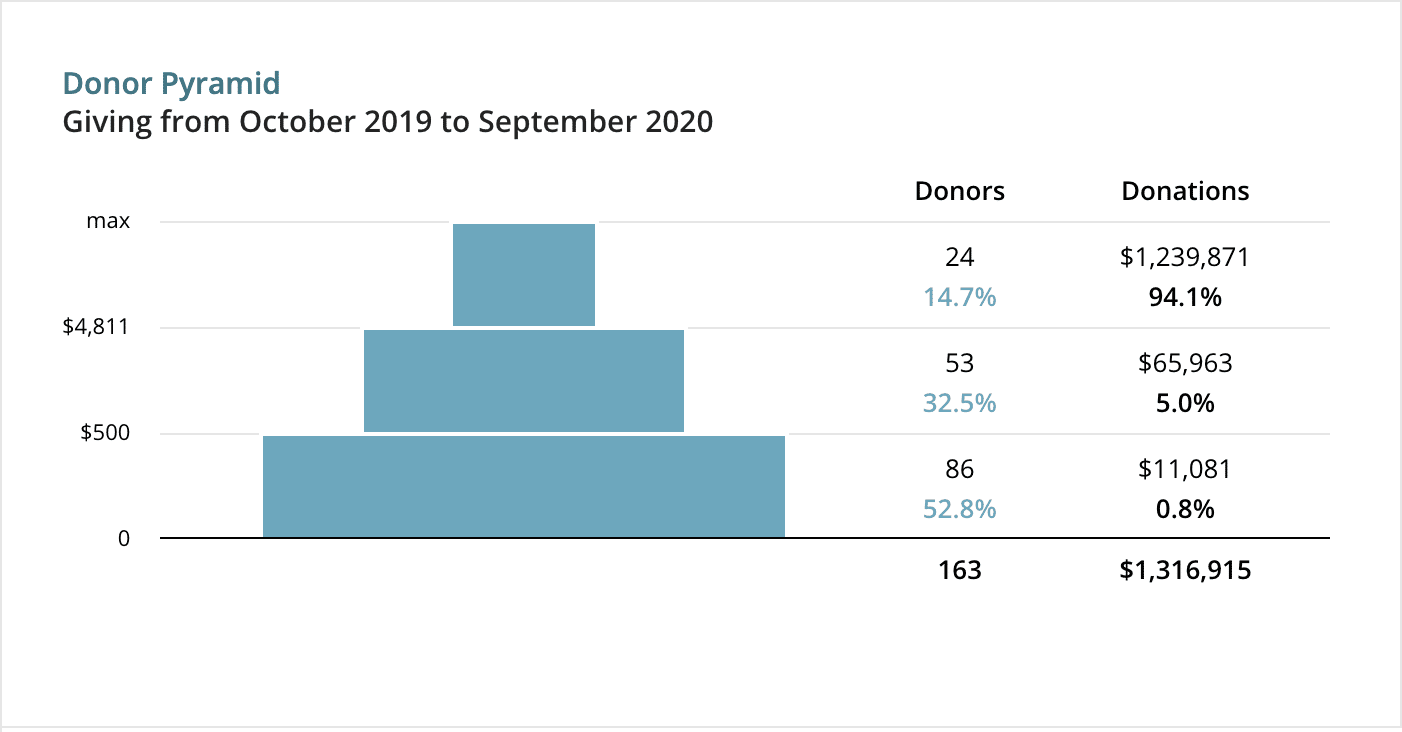Donor Segmentation

What is donor segmentation?
Donor segmentation is the process of separating your donor base into subgroups, or segments, based on qualities they have in common (think: geographical location, age, education level, donor status, etc.). Segmenting donors allows organizations to send more personalized communication, which all donors appreciate.
How do nonprofits use donor segmentation?
Nonprofits use donor segmentation to tailor their donor communication. Creating segments by separating donors into groups based on specific criteria helps organizations create different versions of the same content so that every reader receives something that connects with them personally.
Nonprofits can use donor segmentation to clean up and organize their donor databases. Segments also allow nonprofits to search their databases for specific types of donors. For example, organizations may want to make a special year-end appeal specifically for their major givers. Segmentation will allow organizations to easily locate all of their major givers by searching for “major givers” in their databases.
What are donor segmentation strategies?
There are several strategies to segment your donors. The most important factor is to focus on what will actually improve your communication with donors. Ideally that also means increasing engagement and your annual giving. Here are some popular donor segmentation strategies by category:
Geography
Segmenting your donors by their address is a simple but effective strategy. This can help you invite the right people to your fundraising events by only sending communication to supporters within a certain radius of the event. Then you could send a separate invite for the virtual event to donors outside of the radius.
Geography can also help you check in on your donors who may be affected by a local problem or issue. For example, if you’re a humane society, and you know a major hurricane is headed to the coast of Florida, you can send communication directly to your supporters in the area. You can check on your supporters and offer assistance within your impact area. In this case, you may send a team in the aftermath to support local humane agency efforts to find and rescue displaced animals.
Depending on your nonprofit’s size and reach, you can segment donors by any geographical grouping that makes sense—city, state, county, or region.
Donation amount
Segmenting by donation amount is another popular strategy. If your organization doesn’t have wealth screening, average gift size is another way to make the appropriate ask in the future. You likely receive gifts across the giving spectrum; by tailoring your suggested donations, you can communicate with small, medium, and major gift donors in a way that’s consistent with their giving history.
For example, you might ask donors with an average gift of less than $100 to consider joining your monthly giving program. You might ask your donors with an average gift size of greater than $10,000 if they’d be willing to fund a program or provide a matching gift donation. The exact criteria will depend on your organization. Creating a donor pyramid is a good way to visualize your donation tiers. We recommend that you check to see if your donor management platform automatically generates this for you.

Channel preference
Some donors like emails, others like calls, and others may prefer a letter in the mail. By communicating with donors via their preferred channel, you increase the likelihood they will be receptive to your outreach. You can also highlight the donation channel of their choice such as including a link to a donation page within emails or a donation card within any paper mailings.
Length of donor relationship
Donors that consistently give to your organization year after year are some of the most valuable friends a nonprofit can have. By targeting these donors specifically, you will be able to highlight their value to the organization. Whether it’s a personalized thank you note or an invitation to a live group chat with the your executive director, this segmentation strategy allows you to do something special for these donors to let them know you appreciate them.
Bottom line
Donor segmentation allows nonprofits to customize their donor communication and organize their donors based on different characteristics.
Related Resources
- Kindful blog post: How to Organize Your Donor List
- Kindful blog post: Effective Donor Segmentation Begins with Organized Data